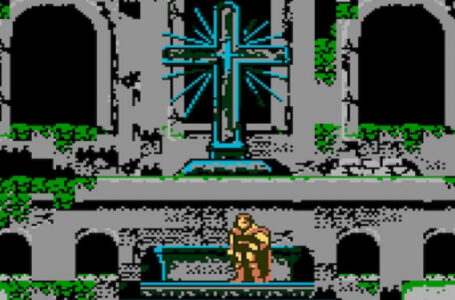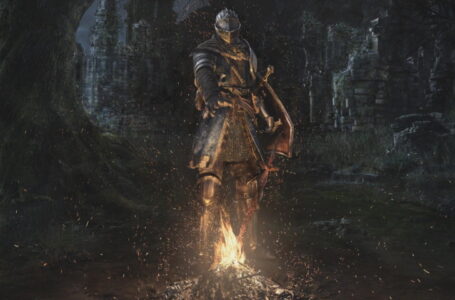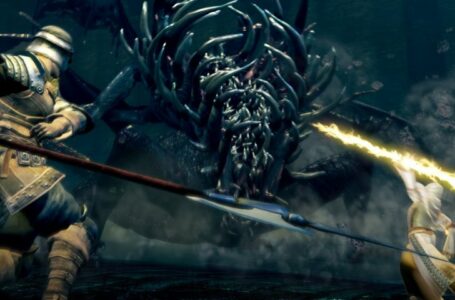The Castlevania games are the original Soulslikes
You know how it’s a running joke that everyone says vaguely difficult games are “like Dark Souls”? Well, I would argue that they should be saying they’re “like Castlevania” instead.
This is something that’s become increasingly apparent to me ever since Konami released the Castlevania Anniversary Collection back in 2019; while I’d played several of the Castlevania games in my youth on friends’ consoles, I never owned my own NES; as such, picking up this collection was the first time I’d spent any really serious time with them. And having now spent some time with the recent release of the Castlevania Advance Collection, I now feel completely confident in saying that Souls games are, in fact, spiritual successors to Castlevania.
Let’s consider a few elements at a time, beginning with the very first Castlevania game, originally released in 1986.
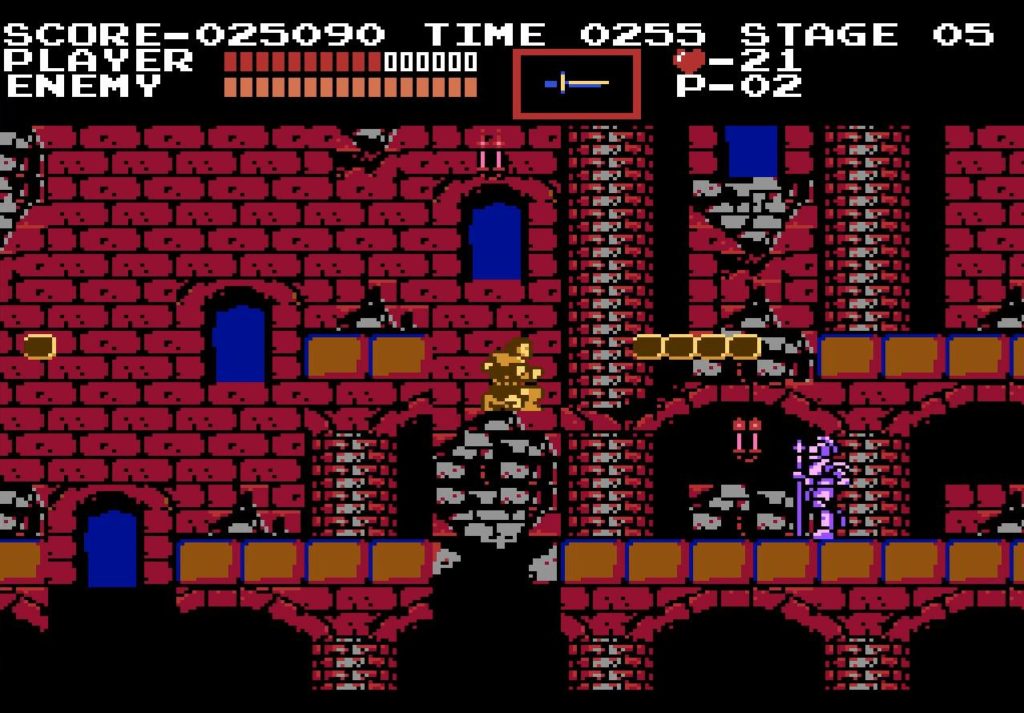
Castlevania gave us a very distinct experience from other games at the time. In contrast to the joyful exuberance of Super Mario Bros. from the previous year, Castlevania’s pace was much more deliberate; you really had to think about every move before you made it, and if you committed to a move that was a mistake, you’d have to deal with the consequences of that mistake rather than being able to “correct” yourself.
A big part of what made Castlevania so distinctive was its sense of “weight”. Jump, and protagonist Simon Belmont would hop a short distance in the air before falling like a rock — and you couldn’t change the direction of his jump in mid-air. Not only that, but if you fell off a platform you’d drop even more heavily — again, with no air control, meaning you’d fall straight down rather than diagonally, regardless of which direction you were moving when you walked off the platform.
From a modern perspective, these controls take quite a bit of getting used to — air control has very much become the default in 2D platformers over the years — but once you do familiarise yourself with how they work, they give the game a unique feel. And the same is true for the combat.
Castlevania’s iconic whip-cracking attack is legendary in gaming, and with good reason: it’s simply fun to use. It has a long reach, it’s powerful and it’s quite different from what other games were doing at the time. But at the same time, it has that same sense of committing to a move; time your whipping poorly and you’ll miss your enemies, leaving yourself open to damage. This is especially apparent when dealing with enemies that have fairly predictable movement patterns, such as the notorious Medusa heads, or the leaping hunchback enemies.
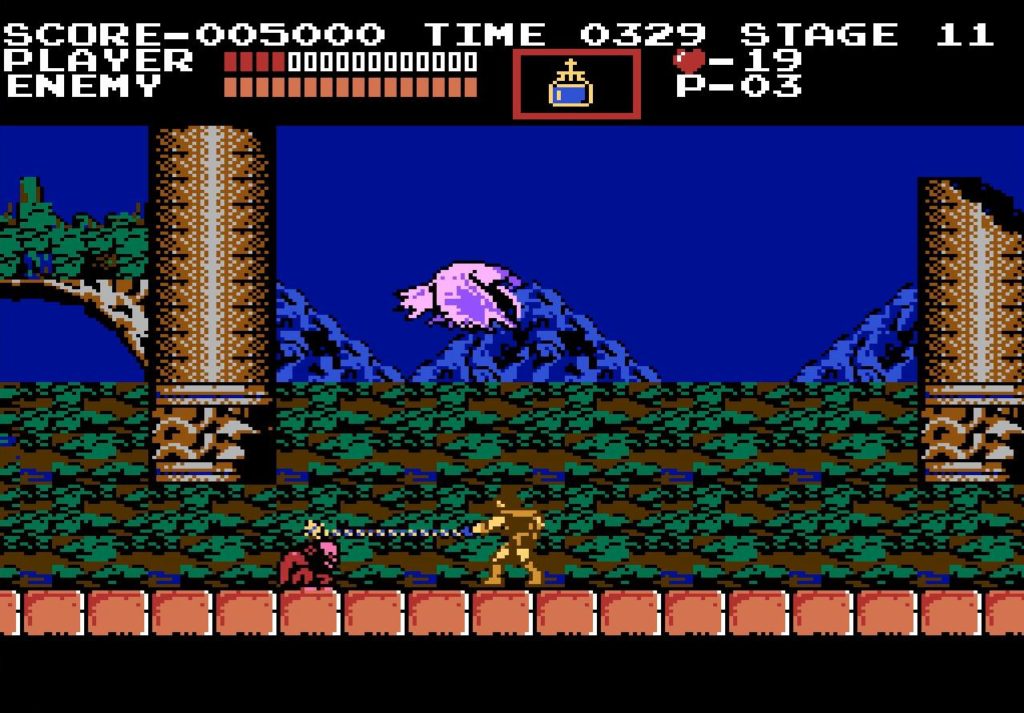
Thing is, Castlevania actually does a great job of teaching the distinct “rhythm” of combat right from the very outset. The opening sequence where you walk through the entrance hall of the castle, dealing with infinitely respawning zombies who can be dispatched in a single hit, shows you that proper timing is key; you need an understanding of your weapon’s reach and speed in order to fight effectively, because simply hammering away at the attack button is a good way to miss as often as you hit — and misses often lead to taking damage. In a game where healing is hard to come by, you need to avoid taking damage as much as possible.
We can trace this side of things forward to the Souls games quite easily; while you don’t tend to spend a lot of time jumping and platforming in Souls games, you do have to commit to every swing of your weapon or cast of a spell. Time those things poorly and you’ll find yourself getting punished harshly — even by the most basic of enemies.
Healing perhaps isn’t quite as hard to come by as in the traditional Castlevania games, but it’s still a limited resource you’ll need to manage carefully. And in the most extreme cases, there are enemies in Souls games who can take you out with a single hit if you mess up the rhythm of combat.
If we zip forward from the first Castlevania to some of the slightly more recent titles such as the Game Boy Advance games, we can see that this is very much still the case later in the series. I’ve been playing Circle of the Moon recently, for example, and in that game the “trash” enemies are just as dangerous as the bosses — if not more so.
The part of the game I’m on as I type this is filled with enemies called “Holy Knights”; these foes take a bunch of hits to take down at my current level, and deal over a hundred points of damage if you either touch them or get hit by the “holy laser” they fire out from their swords at regular intervals.
Given I only have 620 HP, that’s a bit of a problem; six or seven hits and I’m toast. But it’s not just about surviving the immediate encounter — if I’m left with just a sliver of health after dealing with these bastards, I’ve got even less margin for error when dealing with other enemies who are between me and the next health-restoring save room.
In order to take them down with minimal damage, you need to find that perfect opening, get off a few attacks (ideally through a combination of whipping and a subweapon that deals repeated damage, such as the holy water or boomerang) and then make sure you don’t take damage. Since there’s no blocking in Circle of the Moon, that means getting the hell out of the way!
Of course, besides combat with trash enemies, we can see elements in common between Castlevania bosses and Souls bosses, too. Both are heavily pattern-based; both will heavily punish impatience; both stand between you and continued progression through the game world; both offer significant rewards for their defeat.
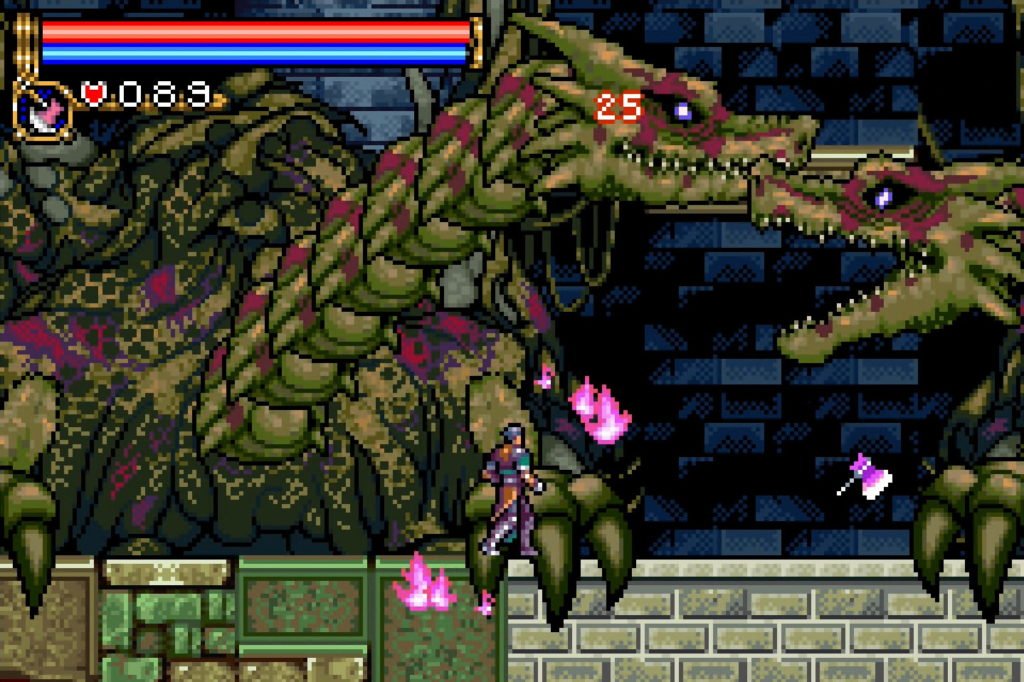
In both instances, reaching a boss for the first time can be daunting experience, since you need to determine what your opponent’s capabilities are, how to avoid their attacks, and when best to time your own strikes. This sort of thing is a mainstay of retro gaming, particularly from the 8- and 16-bit eras, and it all comes down to observing what your enemy is up to. The best retro action games — which include not only classic Castlevania, but also titles like the Mega Man series — provide clear, obvious animation and sound cues as to what an enemy is about to do, allowing you to prepare accordingly. And Souls games do exactly the same, only in a three-dimensional environment.
These cues make for an exciting boss fight, because they allow you to anticipate attacks before they happen, and react to them immediately. Anyone watching will doubtless be impressed at your ability to know what your opponent is “thinking”, and while you’re caught up in the moment, it’s exciting to be a part of — it feels like you really are taking on a tough foe, even though all you’re really doing is recognising patterns and doing the right thing at the right time during those patterns.
Both Castlevania and Souls are open to “cheesing” boss fights to a certain degree, too; while it’s not something you can do in every fight, both series have their fair share of bosses that can easily be defeated with specific tactics. In the original Castlevania, for example, the Medusa boss can be beaten in seconds simply by tossing a Holy Water in front of her.
In Circle of the Moon, meanwhile, the Death fight can be made much easier by casting one of the spells that surrounds you with fire or ice balls, making Death’s flying scythe attacks almost completely ineffective.
And in Souls, there are bosses who can be fought from a distance with magic, or hit from on high while you’re standing in a position that the boss can’t reach you — the Adjudicator boss in Demon’s Souls’ third world is a good example of this.
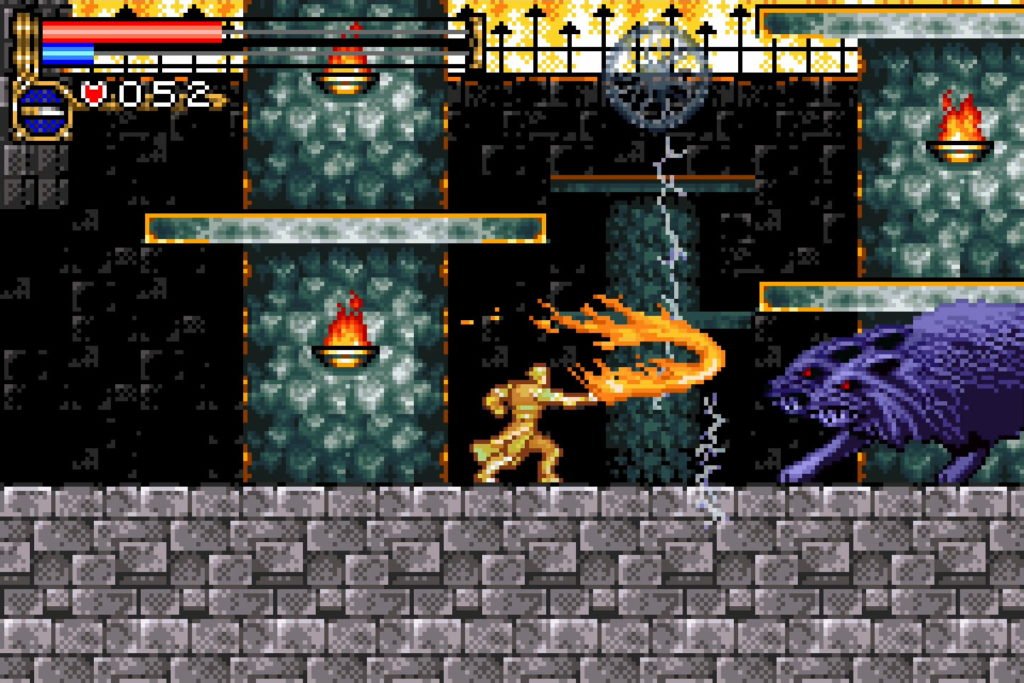
And on top of this, of course, we have the exploratory aspect. The original Castlevania unfolds in distinct “blocks”, which progress in a linear fashion towards one or more bosses along the way. Demon’s Souls works in a very similar way; while you can visit each of the game’s “worlds” whenever you like for the most part, you’ll still likely find yourself working through each in a linear fashion, with checkpoints only occurring after boss battles. In both games, if you mess up, you’ll find yourself set back a significant distance and have to fight your way through all the trash enemies prior to the boss again.
The “Igavania” titles from Symphony of the Night onwards are more akin to the Souls games from Dark Souls onwards in that they unfold in a more open world where you have a certain amount of freedom to choose your route and explore. In both series, though, progression in certain directions is blocked off until you accomplish certain things; in Dark Souls, you’ll need to acquire items such as keys in order to reach certain areas, whereas in Castlevania you’ll need to acquire new abilities.
Not only that, but both series allow for the unlocking of “shortcuts” to make getting around a bit easier; in both Castlevania and Dark Souls you’ll inevitably find that if there’s a particularly tough section, there’s likely some way of getting around it after you’ve cleared it once. If that’s not the case, the games are usually designed in such a way that progressing through said tough section is only necessary once.
In short, if you like the Souls games and have never given a classic Castlevania a go, I strongly encourage you to do so — because while the perspective and presentation is very different, there’s a lot in common in terms of gameplay and structure. And likewise, if you’re a Castlevania fan who mourns the apparent death of the series, it’s well worth looking to the Souls titles as spiritual successors. You’ll find that the two series have a surprising amount of appeal elements in common — and a lot of the skills you’ve developed in one will transfer very nicely to the other!
Join The Discussion
Rice Digital Discord
Rice Digital Twitter
Rice Digital Facebook
Or write us a letter for the Rice Digital Friday Letters Page by clicking here!
Disclosure: Some links in this article may be affiliate links, which means we may earn a small commission if you make a purchase after clicking on them. This is at no additional cost to you and helps support Rice Digital!
- Letter from the Editor: passing the torch - June 30, 2023
- Super Woden GP 2 is looking promising - June 30, 2023
- Inti Creates is making a 32 bit-style Love Live action platformer - June 26, 2023




